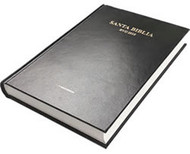

It includes the basic color terms (BCT white, black, red, etc.) the prototype terms (PT). The basic methodological element is the linguistic semiotic approach (linguo-semiotic). Secondary meanings are semanticized or cultural units.

These physical characteristics are not enough to study the secondary meanings of verbal and visual colors. Opponent theory and all its followers use three visual features of visual colors – hue, saturation, and brightness. If we want to reflect all the linguistic possibilities for color signification in language text, we need other classes of words. We know from the B&K tradition, its development in the World Color Survey (WCS), a project of Kay and collaborators, and from their critics color is signified by other terms in natural languages. The definition of Еco points to a basic color term. My modern interpretation of color as a cultural unit is that the cultural unit color includes visual and verbal color. The utterance of the term is determined, obviously, by a given sensation, but the transformation of the sensory stimuli into a percept is in some way determined by the semiotic relationship between the linguistic expression and the meaning or content culturally correlated to it. When one utters a color term one is not directly pointing to a state of the world (process of reference), but, on the contrary, one is connecting or correlating that term with a cultural unit or concept. Eco’s approach is from the point of view of general semiotics (157). He rhetorically declares that we must assume that he is a blind person, although he often comments on visual color in the text. 2 MethodsĬolor as a cultural unit is an approach defined by Eco (1985: 157–75). Besides, the Jewish cultural heritage accepts that Hebrew spelling and pronunciation have moral and theological values. In addition, some red codes remain after translation, and others are encrypted in Hebrew. The Hebrew different types of red present the Hebrew worldview revealing unfamiliar mental connections and unknown contents of the Bible, a theological system with new key points of understanding. All that needs examination, understanding, and explanation. Red describes health and beauty: “My beloved is dazzling and reddish/ruddy, Outstanding among ten thousand” (Cant 5:10).Įven from these examples, it is clear that red in the Bible’s symbolic language is a union of different types of red codes. What is the logic that red is a sign of sin, Satan, the red serpent, and the faithful to Lord seraphìm? Why the meek Lamb, Jesus Christ has been described as “His eyes were like blazing fire”, “His feet were like bronze glowing in a furnace” (Rev 1:14–15).

At the same time, the Hebrew saràph means fire, burn, destroy with fire. In the Hebrew worldview, seraphìm is a plural form of saràph appearing only in Isaiah 6 for the six-winged archangels faithful to the Lord. But how do we associate the giant red satanic serpent with the seraphim, the archangels standing next to the Throne of the Lord in Isaiah 6:6? There is no way to connect them unless we understand Hebrew. We know from Isaiah 1:18 that red is the symbol of sin, and white is the symbol of righteousness. We remember the images in the churches of the “red serpent”, “enormous red dragon” (Rev 12:3–7), “the great dragon was thrown down, that ancient serpent, who is called the devil and Satan” (12:9), “a scarlet beast” (Rev 17:3), “woman was dressed in purple and scarlet” (Rev 17:4–5).

The norm is an exploration of the verbal color language by Kent and Rozanoff’s (1910) test instructions. This peculiarity has been demonstrated in the study of visual colors in folklore rituals of passage (marriage and burial, see Almalech 1996), and the Norm of Word Associations to Basic Color Terms, as well as the function of verbal red in novels ( Almalech 2001, 2011). An important feature of red is its ability to signify positive and negative meanings.


 0 kommentar(er)
0 kommentar(er)
